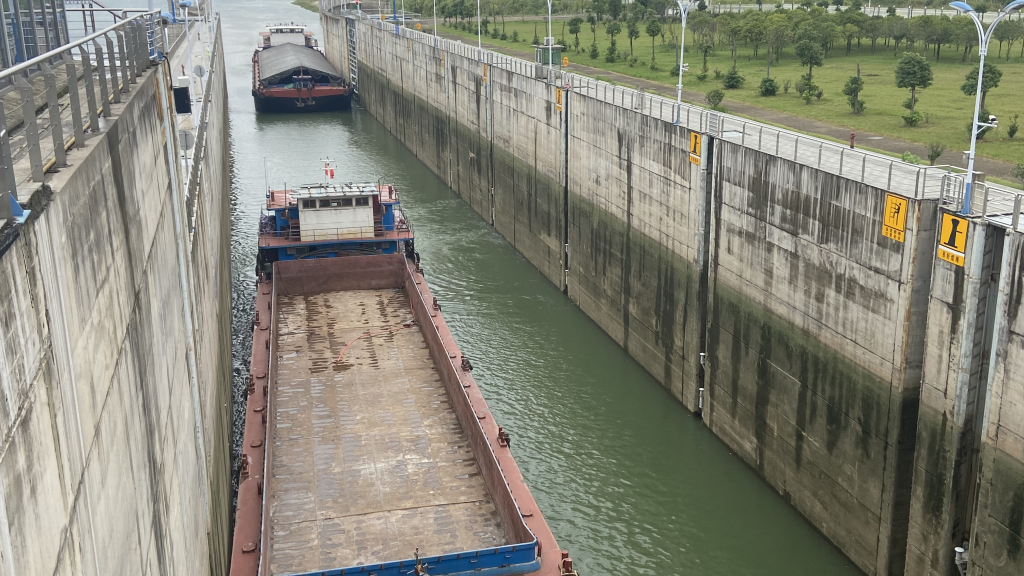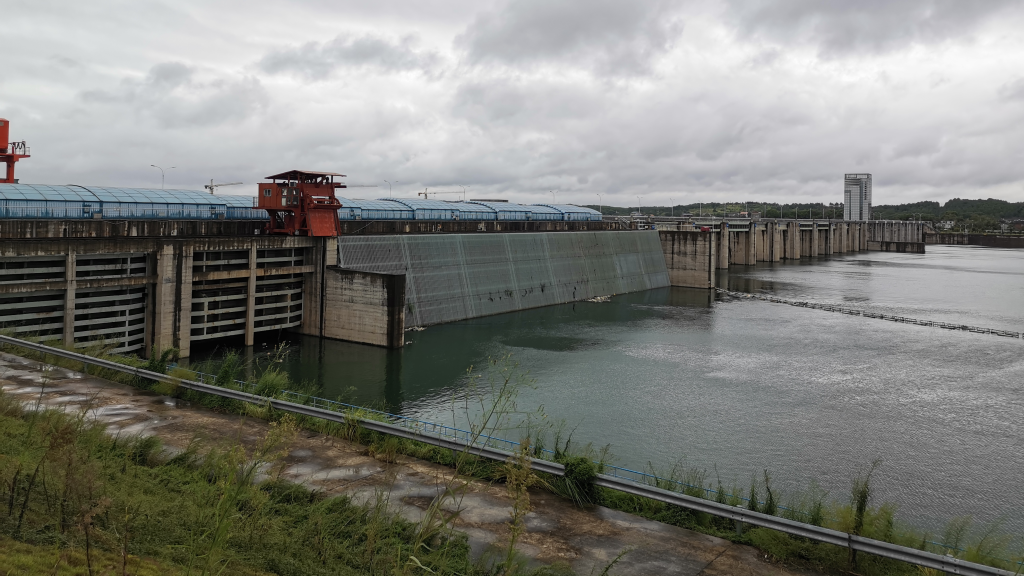Others
Inland Waterways Offer Sustainable Transport for the PRC
Graham Dwyer 20 Jul 2021

Hunan’s population and industry are concentrated along the Xiang River, which offers great opportunities for shipping minerals and agricultural products from the PRC’s interior to its major eastern seaboard markets.
To enhance inland water transport in Hunan Province, PRC, ADB helped finance the construction of a navigation–cum–hydropower complex, an inland port, and landing stations in remote rural areas.
ADB improved the low-carbon waterway transport system on the Xiang River in Hunan Province, PRC, and contributed to an efficient, safe, affordable, and sustainable inland waterway transport system in the province.
Hunan in the People’s Republic of China (PRC) is a landlocked province with one of the longest provincial inland waterway transport networks in the country. Yet in 2009, the network carried only 10% of the province’s overall freight, since only a small fraction of it could accommodate vessels of carrying capacity of 1,000 tons or more.
Central to Hunan’s waterway transport is the Xiang River, which connects six of Hunan’s cities with the PRC’s eastern seaboard and forms part of a bigger network that starts at the Yangtze River.
“Hunan’s population and industry are concentrated along the Xiang River, which offers great opportunities for shipping minerals and agricultural products from the PRC’s interior to its major eastern seaboard markets,” says Asian Development Bank (ADB) Senior Transport Specialist Nicolas Dei Castelli. “But passage for large vessels was held back by limited water depth and long rocky shoals along the Xiang River’s middle and upper reaches as well as obsolete and insufficient infrastructure and loading facilities in the river’s ports.”
To enhance inland water transport in the province, ADB helped finance the construction of a navigation–cum–hydropower complex in Hunan, an inland port, and landing stations in remote rural areas, while providing associated institutional strengthening.
ADB approved in December 2012 a $150 million loan toward the total estimated cost of more than $393 million for the Hunan Xiangjiang Inland Waterway Transport Project, which was planned to be carried out over the following 5 years.
The biggest part of the project was the construction of a navigation and hydropower complex about 39 kilometers upstream of Hengyang City.
Expanding capacity
The project’s barrage, which forms part of the navigation complex, has 17 sluice gates—mechanisms that can be opened or closed to control river flow. For vessels to pass the barrage, they go through a ship lock which enables them to navigate through steep changes in the level of the river. The project’s ship lock is located on one side of the river, and was designed to hold up to four 1,000–ton vessels.
The project included construction of a run–of–the–river hydropower generation plant with a total installed capacity of 90 megawatts (MW) and normal annual energy output of 358.2 million kilowatt–hours. “The entire barrage was designed to be multipurpose, with hydroelectricity generation providing revenue that would help the province recover the investment cost,” says Mr. Dei Castelli.
The ship lock was completed and opened to navigation in December 2014, and the four power generators started operation between December 2015 and September 2016. They have been connected to the grid with an annual production capacity of 350 million kilowatt-hours.
Cargo terminals in the project site had only main moorings and loading ramps for small vessels, with the biggest berth capable of receiving vessels with capacities of only 300 tons. The project sought to increase the port capacity of the province’s inland waterway network. Engineering designs for two cargo terminals, each with a 100 meter concrete berth were devised, although only one was needed—at Songbai.
The Songbai cargo berth began operations in 2017 and included a 1,000 deadweight tons (DWT) universal berth and a 470 meter access road. Apart from improving the berths, new facilities were added to the terminals, such as open cargo storage areas, warehouses, and workshops. Some 126 public landing stages were built along with 7,419 meters of guardrails and 26.8 kilometers of riverbank protection, giving rural communities better and safer access to the waterway. The project addressed women’s needs by promoting employment opportunities and their effective project participation through training and capacity building.
Also incorporated into the project design was a fish pass, to ensure that no fish and other aquatic animals will be carried into the hydropower turbines.
Eliminating bottlenecks
Improved inland waterway navigation has eliminated the “bottleneck” in the middle reaches of the Xiang River, allowing 1,000 DWT ships to navigate from Jinweizhou on the Xiang River to the Yangtze River. After completion, the average size of vessels navigating through the project site increased from 225 DWT in 2010 to 887 DWT in 2018.
“The project has improved the low-carbon waterway transport system on the Xiang River and contributed to an efficient, safe, affordable, and sustainable inland waterway transport system in the province,” says ADB Country Director in the PRC Yolanda Fernandez Lommen. “As ADB’s first inland waterway transport project in the PRC, it also demonstrated ADB’s commitment to focusing future transport sector support on more sustainable forms of transport.”
Transportation costs decreased by CNY0.039 (about half a US cent) per ton-km between 2012 and 2019, which will significantly boost regional economic development. Hengnan county, where the complex is located, achieved an annual growth rate of 99.33%, much higher than the provincial average of 71.86%. The income of rural residents in Hengyang and Yongzhou has also been growing much faster than that of urban residents, while income gaps between urban and rural residents have narrowed significantly.
“Inland waterway transport can be an efficient, cost-effective, and green transport alternative, especially for cargo services,” says ADB Director of the Sustainable Infrastructure Division in the East Asia Department Sujata Gupta. “As this project shows, a well-developed inland waterway network provides people and businesses with a more reliable option to transport their goods, and maximize opportunities for interconnection.”
Author

Graham Dwyer
Principal Communications Specialist, Department of Communications, ADB
This article is reproduced from Asian Development Bank.


